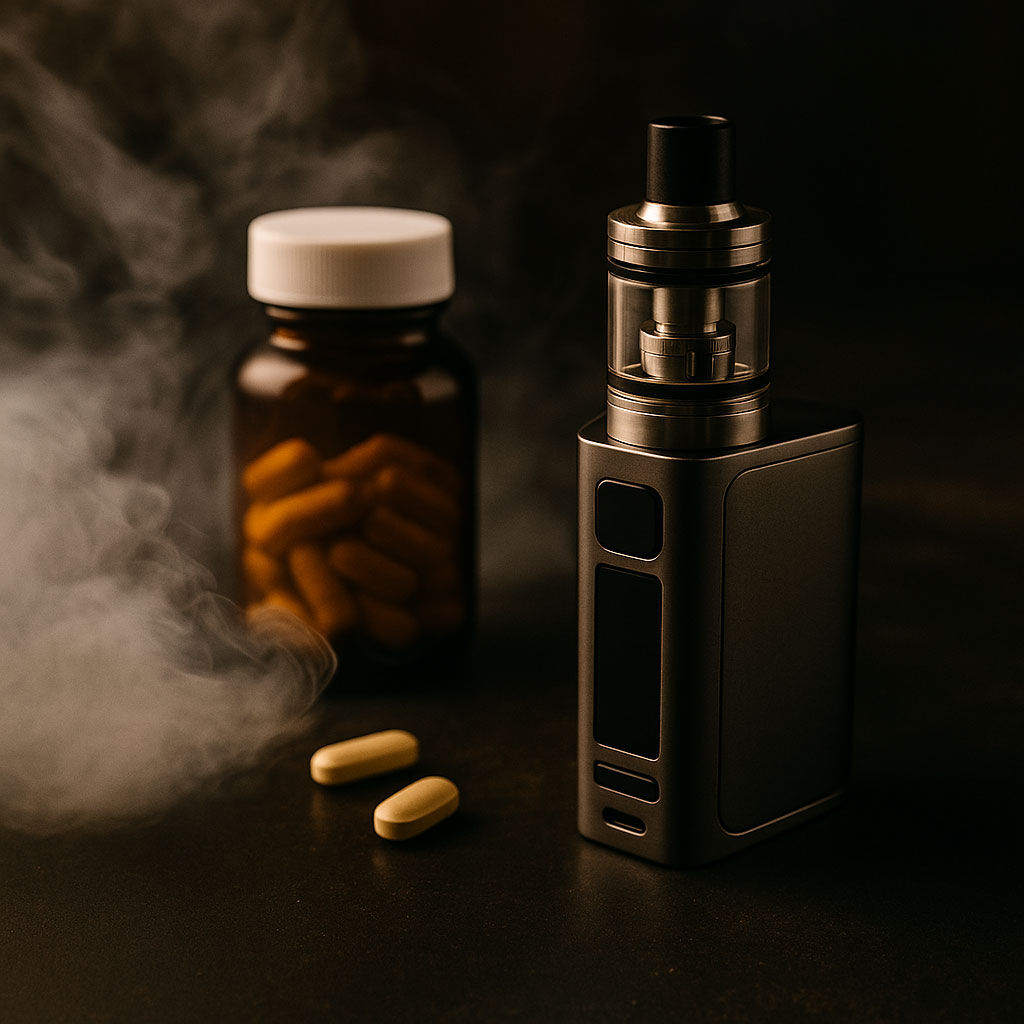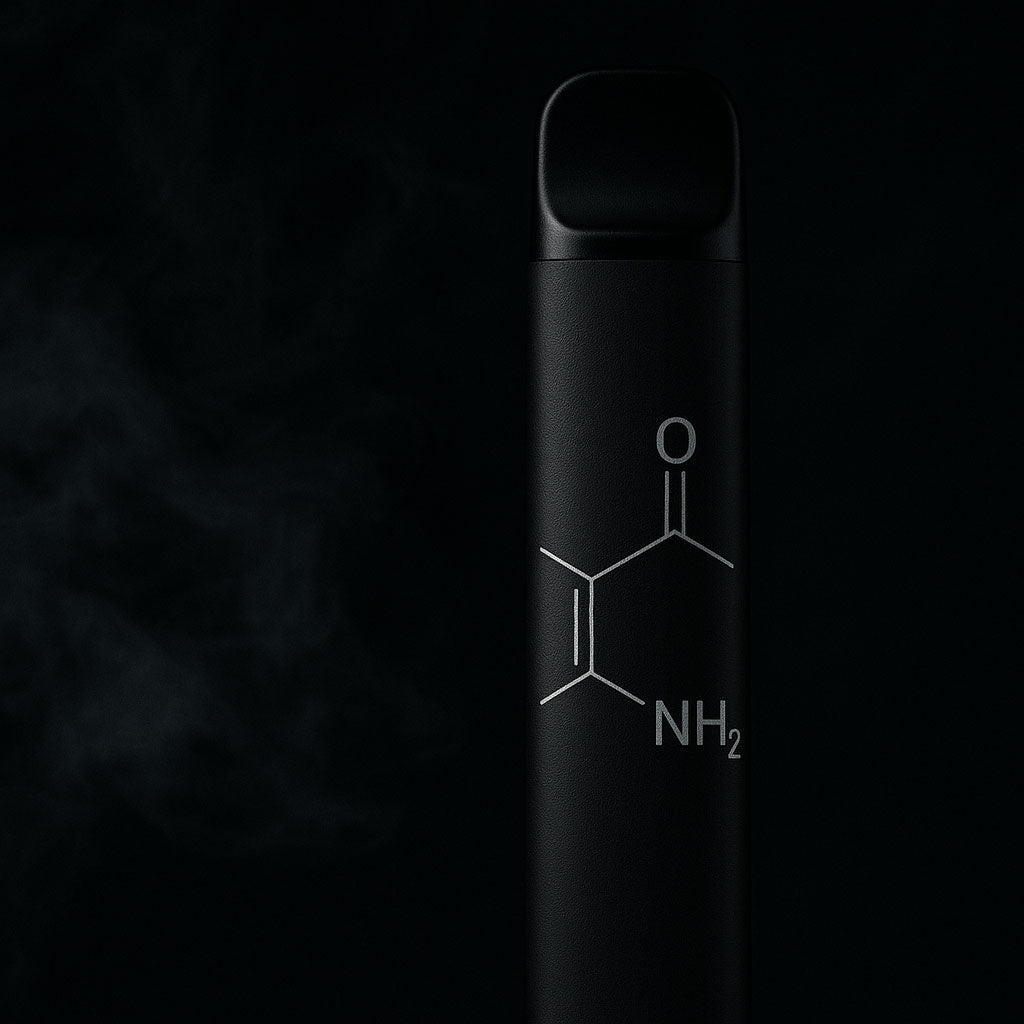As the search for safer ways to vape grows, nixamide vs nicotine has become one of the most talked-about comparisons online. Some vapers see nixamide as a next-generation nicotine alternative-something that promises the same satisfaction without the same risks. But behind that promise sits a mix of evolving science, clever marketing, and a lot of unknowns.
What Nixamide Actually Is
The earliest products labeled as nixamide were believed to contain nicotinamide, a form of vitamin B3 that's already present in the human body and plays a role in energy metabolism. Because nicotinamide is biologically safe at standard doses, it seemed like a natural fit for companies trying to design a "clean" vape. That framing helped Nixamide gain attention fast, especially among people looking to step away from nicotine.
But soon, scientists began to notice something didn't add up. Pure nicotinamide doesn't activate nicotinic acetylcholine receptors-the brain receptors responsible for nicotine's effects. Yet many vapers described nixamide as producing a light buzz, a calming effect, or a sharper mental focus. That reaction hinted that another compound was at play.
Recent independent lab analyses confirmed it. Many liquids sold as nixamide weren't just vitamin-based-they also contained 6-methyl nicotine, a synthetic nicotine analog designed to mimic how nicotine interacts with the brain's receptor sites. That means some "nicotine-free" vapes weren't nicotine-free at all but rather chemically tweaked versions of it (Duke Health).
This blending of nicotinamide and synthetic analogs has made nixamide one of the most confusing and controversial entries. To some users, it feels like a smoother transition out of nicotine. To others, it looks like a loophole designed to dodge regulation while delivering the same high.
To understand how we got here, and how these formulations are evolving, our article What Is Nixamide? A Straight-Talk Guide to a New Nicotine Alternative breaks down the molecule's origins, its role in nicotine-free marketing, and the early research that's beginning to uncover what it really does in the body.
Nicotine: The Known Standard
Nicotine is the foundation on which all modern vaping science rests. It's the molecule responsible for both the satisfaction and the challenge of quitting. When inhaled, nicotine travels rapidly through the lungs and into the bloodstream, reaching the brain in seconds. There, it binds to nicotinic acetylcholine receptors, triggering a flood of dopamine and other neurotransmitters that create the sharp rise in focus, calm, or energy that users associate with a satisfying hit.
This mechanism is why nicotine can be both stimulating and relaxing, depending on the dose and the individual. It sharpens attention at lower levels but can feel soothing at higher ones. Over time, however, repeated exposure leads the brain to expect that surge of dopamine. The more those receptors are activated, the more they adapt, eventually needing more nicotine to achieve the same result.
The conversation around nicotine's role isn't just about dependence-it's also about understanding why it holds such a powerful place in human behavior. Our article The Truth About Nicotine: Why Some People May Never Quit dives deeper into the psychology of nicotine use, exploring how it ties into habit, mood regulation, and why breaking free from it often takes more than just replacing the molecule.
The Science Behind Receptor Binding
When you inhale nicotine, it fits like a key into nicotinic acetylcholine receptors (nAChRs), switching them on and releasing dopamine. That reaction produces the familiar stimulation and calm that make nicotine both rewarding and potentially addictive. Every time those receptors fire, the brain reinforces the behavior that caused it.
Nicotinamide, however, doesn't fit that lock. It's active in other biochemical pathways but doesn't interact with nicotine receptors. So when a product labeled "nixamide" produces a nicotine-like sensation, it's likely that an analog such as 6MN is responsible. That difference could matter for addiction potential: stronger binding or prolonged receptor activation might heighten dependence rather than reduce it.
Researchers are still examining how these analogs interact with the brain in laboratory studies, but early findings suggest the story is more complex than "nicotine-free."
The Behavioral Side of Nicotine Alternatives
For many vapers, the draw is behavioral, not chemical. The act of holding a device, watching the vapor cloud, and taking a slow inhale becomes part of the reward loop. Even without nicotine, those rituals reinforce the same neurological pattern.
That's why the shift from nicotine to nixamide can feel less like quitting and more like changing brands. The routine stays, the sensory cues stay, and the brain still expects the minor hit of satisfaction that comes right after the inhale. What changes is what's inside the vapor-and that's where the uncertainty lives.
Some early users describe nixamide vapes as smoother or lighter, while others say they crave them just as much as regular nicotine. Our analysis Nixamide as a Nicotine Alternative: What Vapers Should Know takes a closer look at these real-world experiences, breaking down how users report changes in throat hit, craving intensity, and satisfaction compared to nicotine-based vapes.
Behavioral scientists see this as a reflection of how conditioned cues drive vaping behavior. The flavor, the device, even the sound of the inhale can all trigger dopamine before the compound hits your bloodstream.
This makes nixamide an interesting psychological case. It presents itself as a step away from addiction but may preserve the very behavior that sustains it. For people trying to reduce dependence, understanding this loop is key: replacing the chemical without addressing the ritual can make the habit linger. Those behavioral nuances are part of what the ongoing analysis in Nixamide Vape Research: Promise, Pitfalls, and Where the Science Stands is starting to unpack, especially in understanding how habit and chemistry overlap.

Nixamide vs Nicotine Explained
When comparing nixamide vs nicotine, the goal isn't to crown a winner-it's to understand what's actually known about each compound. Nicotine is established science; nixamide is emerging research. One has decades of data, the other has only just started being studied.
Chemically, nicotine is predictable. It binds to receptors, triggers dopamine release, and creates measurable effects that have been documented for years. It's addictive, but its behavior in the human body is well-mapped. Nixamide, by contrast, is harder to define. What's marketed as "nixamide" can vary between products-some use only nicotinamide, while others mix in synthetic analogs like 6-methyl nicotine to recreate nicotine's effects. That inconsistency makes it difficult for scientists to evaluate its safety or effectiveness.
At this stage, what we know is that nixamide is not a one-to-one substitute for nicotine, nor is it a guaranteed safer choice. Early studies have shown that certain analogs can bind more tightly to nicotine receptors, suggesting they could be stronger per puff, but we don't yet know what that means for long-term use. There's also no broad toxicology data on how these compounds behave when heated and inhaled.
For now, nixamide exists in a space between innovation and uncertainty. It offers an idea-a nicotine-like experience without the traditional molecule-but it hasn't yet proven what that means for health, dependence, or satisfaction. What matters most for vapers is awareness: knowing that "nicotine-free" doesn't always imply risk-free, and that research is still catching up to marketing.

Where the Conversation Is Heading
Lab studies suggest nixamide products may contain analogs that behave like nicotine, but long-term research still hasn't answered what that means for the body or the brain.
That uncertainty doesn't mean the conversation should stop - it means it should deepen. Each new compound that enters the vaping world deserves the same scrutiny that nicotine has received for decades. Understanding how these molecules interact with our biology, behavior, and daily habits is the only way to make informed choices about what we inhale.
At Ruthless, education is the first step toward a healthier lifestyle. Whether someone chooses to taper down their nicotine use, explore alternatives like nixamide, or move toward living nicotine-free, the key is knowledge - knowing what's real, what's marketing, and what's still being discovered.




Leave a comment
All comments are moderated before being published.
This site is protected by hCaptcha and the hCaptcha Privacy Policy and Terms of Service apply.